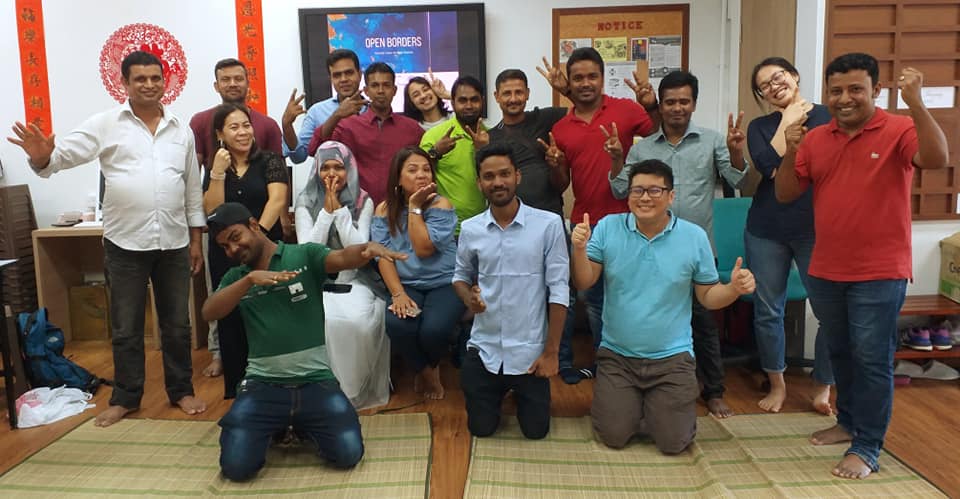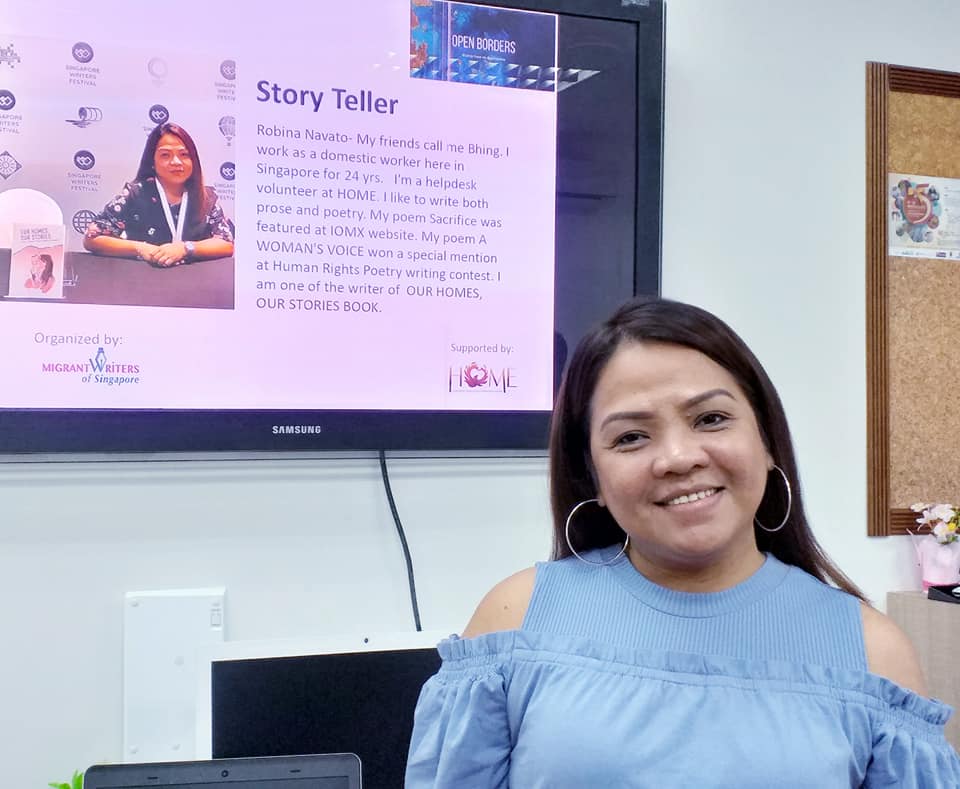Yong Han Poh is a Singaporean citizen and senior at Harvard University in the US studying Anthropology and East Asian Studies. She has written for The Diplomat, the Singapore Policy Journal, and the ArtsEquator. The views in this piece do not necessarily reflect those of Southeast Asia Globe.
On April 5, the Singaporean government converted two worker dormitories into isolation areas, a move that would confine 20,000 migrant workers to their rooms for the next two weeks. This came after local transmission of Covid-19 cases surged, particularly amongst the foreign worker community. Yet, in the following day, several reports emerged detailing squalid, crowded dorm conditions that made “social distancing” all but impossible.
The reports triggered responses from various NGOs, activists, and public intellectuals, many of whom condemned the government for its inexcusable failure to act earlier. The damning reports caused outrage (albeit within a self-selected, probably minority community), and prompted a flurry of reflection and soul-searching amongst these Singaporeans.
How did we let this happen? How could we let this happen?
If this dormitory debacle goes to show anything, it’s that it took a pandemic for us to care about migrant workers.
Let’s not even talk about how much of this “concern” has been articulated in instrumental terms: We care about migrant workers’ health insofar as they could become vectors of local transmission or bodies in local Covid-19 statistics that might mar Singapore’s stellar reputation in managing this outbreak.
Let’s not talk about how, for years, local migrant rights NGOs like Transient Workers Count Too (TWC2) and the Humanitarian Organization for Migration Economics (HOME) have been spotlighting the various injustices and precarities experienced by migrant workers: low wages, high agency fees, poor food, poor accommodation. The crisis may have exacerbated these issues, but they existed long beforehand.
Let’s not talk about the high number of workplace deaths and injuries amongst the migrant worker community – for context, there have so far been a total of seven deaths from Covid-19 in Singapore. Yet, in the first half of 2019 alone, there were 17 deaths of migrant workers from workplace accidents. For the longest time, NGOs have been lobbying for better workplace safety practices, but it took a pandemic for us to stop seeing migrant workers as disposable machines.
Let’s just talk about the sad, but probably true reality – that we don’t see migrant workers as fellow human beings.
Do we not see migrant workers as human?
The very term “migrant workers” is already telling. Technically, most migrants in Singapore are migrant workers, too, but we don’t call them that – instead, we refer to them as “expatriates”, “foreign talent”, or simply, “migrants”. The term “migrant worker” conjures an image of the low-wage migrant that is nationalized, racialized and gendered. Already, we map on specific industries: Construction, factories, ship-yard building.
By referring to the migrant population primarily as “workers”, we end up commodifying them into labour units, and thus, strip them of the broader lifeworlds they are situated in. These are people with real families, homelands, and communities. In other words, they become reduced to factors of production that can be computed into an elegant economic algorithm or pithy acronym: GDP (Gross Domestic Product); NVA (Net Value Added); TFP (Total Factor Productivity).
This is not accidental. This is a product of the state’s wholesale embrace of a neoliberal migration regime that locates migrant workers at the bottom of a heavily tiered migration hierarchy, each with corresponding rights and privileges. Migrant workers on Work Permits, we are told, don’t deserve the same privileges as those on, say, Employment Passes, who – amongst other privileges – can bring their dependents to Singapore.
We don’t bat an eye at the fact that the Work Permit subjects all female foreign domestic workers to compulsory pregnancy check-ups, or that Work Permit holders are not allowed to marry a Singaporean Citizen or Permanent Resident without prior approval from the Ministry of Manpower. We think it acceptable to regulate their intimate lives, because we see them as workers – not as humans with human needs for intimacy.
In mainstream media, stories of migrant workers suffering also tend to be represented in ways that strip suffering of emotion. Tables, charts, statistics – the very apparatus used to narrate migrant lives – are couched in “objective” visual and textual apparatus that obscure the lived realities of many migrants.

The vagaries of the news cycle mean that in time, we become desensitised. When I interviewed a former journalist at the Straits Times, she told me her supervisor declined to publish her proposed article on an increase in migrant worker deaths because he thought the percentage difference that year was “marginal” and “insignificant”. “They needed a new angle to keep it fresh.”
Clearly, their lives are mere commodities. Clearly, not all lives are valued equally.
How can we care so little? Why are we not more angry?
Part of this is structural. The sites where migrant workers work at are divorced from the public eye, rendering everyday abuse invisible. They also live in geographically isolated areas, usually in dormitories built and run specifically for migrant labourers, clustered around industrial areas located along the peripheries of Singapore’s coast, areas that are “zones of exception”.
We have allowed ourselves to hear stories of migrant suffering without doing more to change the fundamental structures of violence that perpetuate migrant suffering. Forget the state; we, as citizens of this country, are also complicit
This occupational and residential segregation makes it easy for the ordinary Singaporean to forget the exploitations that happen behind the safety barriers of construction sites or the private walls of employers’ homes. It brings to mind Ursula Le Guin’s story, The One Who Walks Away from Omelas, where the happiness of citizens in Omelas are contingent on the suffering of a child locked in the basement.
“They all know it is there, all the people of Omelas. Some of them have come to see it; others are content merely to know it is there. They all know it has to be there. Some of them understand why, and some do not, but they all understand that their happiness, the beauty of their city, the tenderness of their friendships, the health of their children … depend wholly on this child’s abominable misery.”
In a similar vein, Singapore’s everyday functioning is so dependent on the large migrant worker population. How much of our visible prosperity – the glittering skyscrapers reproduced in glitzy films like Crazy Rich Asians – is dependent on the invisible suffering of our substantial migrant worker population?
Yet, we have allowed ourselves to hear stories of migrant suffering without doing more to change the fundamental structures of violence that perpetuate migrant suffering. Forget the state; we, as citizens of this country, are also complicit.
This segregation also means most migrants and locals don’t cross paths, and thus, have little opportunity for organic interaction. How many of us can genuinely say we have migrant worker friends? This social distance has real effects – it means we see them as alien Others, as threats to our social fabric. A study by the International Labour Organisation found that over half of Singaporeans see migrant workers as a cultural threat.
After the Little India Riots in 2013, we don’t just see them as cultural, but also as security threats. At migrant enclaves and dormitories, surveillance technologies like CCTVs abound and, at some dormitories, individual movement is highly curtailed through the imposition of curfews and the tracking of entry and exit through manned checkpoints with security guards.
In this pandemic, police presence has also been stepped up at the dormitories, ostensibly to enforce social distancing. But one cannot help but wonder – is this also an exercise in crisis management? Is the state merely pre-empting a potential riot, for fear that its failure to manage the “ticking time bomb” incites widespread anger amongst the migrant worker population?
The long fight to “prove” humanity
To address this “humanity gap”, many NGOs have tried to humanize migrant workers through various communications campaigns. For instance, SAMA SAMA tried to redefine migrant workers as heroes, and partnered with Humans of Singapore to feature stories of local migrants.
Beyond NGOs, migrant writing communities have launched initiatives to change locals’ perceptions.
For example, Migrant Writers Singapore, a local migrant literary collective, launched Open Borders: Stories Have No Boundaries, a storytelling series, in 2018. I attended one of these sessions in December 2018, co-organised with NGO HOME. There, I heard Bhing, a Filipino domestic helper, tell a story about the travails of long-distance mothering.

More than one year later, I still remember her story: Bhing had left the Philippines just one year after her child was born. Unsure of how to support herself as a single mother, she had decided to take a leap of faith and come to work in Singapore as a domestic helper. In the intervening years, she barely had enough time or money to fly home for vacation. She recalls a particularly heart-breaking moment, when she finally returned for the first time in six years. Her own daughter had asked her: “Are you my mummy?”
In encouraging domestic helpers like Bhing to present their stories, the organiser Zakir had hoped for members in the audience to think, “they also mothers, they also have children”. In other words, perhaps listening to these stories might make us appreciate our helpers more, or even compel people to offer their helpers more vacation leave to enable them to return home to see their children more frequently.
When I asked Zakir why he started the series, he told me it was because he deeply believed that poetry and storytelling could serve as a platform to showcase migrant workers’ humanity – that “migrants are human too”.
Zakir was consciously trying to harness the power of stories to humanise migrants by highlighting the real stories behind these workers. In this way, the nameless worker is given a face and a voice, when he or she tells stories about her own dreams, fears and families.
I celebrate these migrant writing initiatives – indeed, I have attended several, and also helped out at some. Yet, I also find the sheer fact that migrants feel the need to “prove” their humanity deeply troubling. It is frankly absurd that in 2020, their humanity is still a point of contention.
This dormitory fiasco may have prompted soul-searching amongst much of the online community, but even then, I am aware that these reflections remain confined to a self-selected group. If the comments section in our national newspaper The Straits Times is anything to go by, “the average Singaporean” is at best, politely perturbed, and at worst, outrightly angry, at all the “fuss” made over this episode.
These comments trouble me, for they remind me that even as I look around my immediate social circle and feel optimistic about social change in the future, I am, by all measures, living in a bubble. I am even more troubled by the fact that for the most part, I am unsure of what I can, or should, do to help speak up to change these dominant impressions.
I plan to continue volunteering with local migrant writing initiatives, and I plan to keep writing about migrant issues. But I can’t help but worry that I am probably preaching to the converted, yelling into an echo chamber.
For goodness sake, Singapore. You don’t need a pandemic, or an article, to tell you that migrant workers are also human.
For information on how to help migrant workers during the Covid-19 outbreak, a spreadsheet with information has been prepared here.


